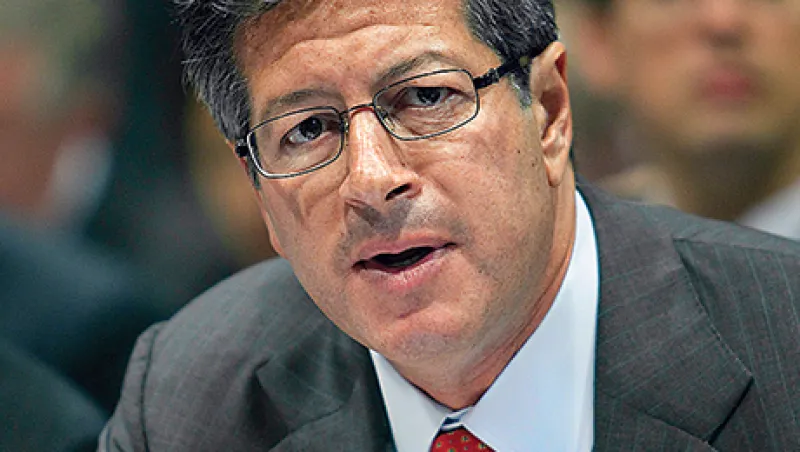The big stick of legislation has forced derivatives to trade more openly and electronically. As dealers pull back from the market and fixed-income liquidity tightens, could bonds be next?
Few paid much attention early this month when MTS Group, owned by the London Stock Exchange, acquired Bonds.com, an upstart U.S. electronic bond trading platform. Launched by the Italian Treasury in 1988 and privatized to a group of federated banks before its 2007 absorption into the LSE, MTS is the oldest electronic bond trading venue in Europe and remains one of its most active, executing more than $100 billion in trades per day.
“It’s a natural extension for us; there are plenty of Europeans interested in U.S. fixed income and plenty of Americans interested in European flow,” says Mark Monahan, chief executive of MTS’s new U.S. subsidiary, adding that the company will also expand its buy-side-focused government bond trading platform, BondVision, into the U.S. “We want to be the natural connection and consolidation point between the two.”
Nearly half of U.S. government bond trading takes place online, according to Greenwich Associates, a Stamford, Connecticut–based research firm. Electronic fixed-income trading beyond Treasuries is far less active: Just 8 percent of U.S. investment-grade corporate bonds trade online, and volume is similarly low in municipal bonds. The expansion of an established electronic venue like MTS across the pond is a potentially significant step toward greater electronification of the U.S. fixed-income market.
Fixed income has historically been a voice-dominated, relationship-driven market, but thanks to new Basel III capital requirements, many of the dealer banks that have driven volume are scaling back. This has created an opening for electronic trading venues to pick up the slack. But liquidity isn’t so tight that market participants comfortable with the old OTC model are looking to embrace electronification more wholeheartedly, argues David Easthope, a San Francisco–based securities analyst with consulting firm Celent.
“It’s a slower evolution because there’s no regulatory mandate” to compel the fixed-income market to go electronic, says Lee Olesky, CEO of New York–based Tradeweb Markets, which handles more than 50 percent of electronic trading in U.S. government bonds and bought retail bond trading platform BondDesk Group last September. As trading firms’ technological sophistication increases and it becomes possible to replicate in an electronic environment the anonymity of traditional fixed-income trading, Olesky adds, “you’ll see more of the market making the shift.” That day is still a long way off, but by offering market participants more choice, the arrival of MTS in the U.S. “may push it a little closer,” Easthope says.






